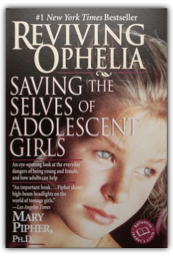
At adolescence, says Mary Pipher, "girls become 'female impersonators' who fit their whole selves into small, crowded spaces." Many lose spark, interest, and even IQ points as a "girl-poisoning" society forces a choice between being shunned for staying true to oneself and struggling to stay within a narrow definition of female. Pipher's alarming tales of a generation swamped by pain may be partly informed by her role as a therapist who sees troubled children and teens, but her sketch of a tougher, more menacing world for girls often hits the mark. She offers some prescriptions for changing society and helping girls resist. 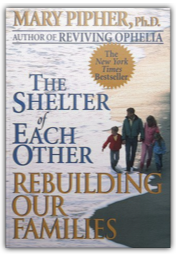
In The Shelter of Each Other, Mary Pipher does for the American family what she did for adolescent girls and their parents in her bestselling book Reviving Ophelia: she opens our eyes wide to the desperate realities we are facing and shows us a way out. Drawing on the fascinating stories of families rich and poor, angry and despairing, religious and skeptical, and probing deep into her own family memories and experiences, Pipher clears a path to the strength and energy at the core of family life. Wise, compassionate, and impassioned, The Shelter of Each Other challenges each of us to face the truth about ourselves and to find the courage to protect, nurture, and revivify the families we cherish. 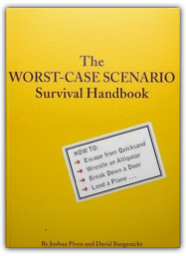
How to Wrestle Free from an Alligator: 4. If its jaws are closed on something you want to remove (for example, a limb), tap or punch it on the snout. 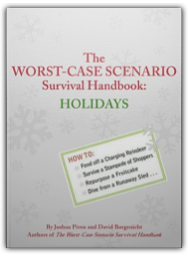
Turkey on fire? No plans for New Year's Eve? Obnoxious relatives headed your way? The authors of the best-selling The Worst-Case Scenario Survival Handbook are here to help you survive the dangers of the holiday season, from Thanksgiving to New Year's Day. Learn how to rescue someone stuck in a chimney, survive the office holiday party, and escape a runaway parade balloon. Expertly deal with a meddling parent, silence a group of carolers, and treat a tongue stuck to a frozen pole. Illustrated, step-by-step instructions guide you through these and dozens of other festive scenarios. With a helpful appendix of holiday excuses, last-minute gift ideas, and creative drink recipes for when the liquor runs out, this is truly the perfect gift. Gleaming silver cover. Fits all sized stockings. 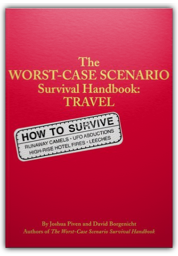
Be very, very afraid. When you step through your door for an innocent excursion, grave danger awaits. You might be mugged; tied up; attacked by scorpions, piranhas, or tarantulas; trapped in a falling plane or elevator, a runaway train, a car on a cliff, a sandstorm, a riptide, or a riot. But now it's safe to take that vacation anyway. Just pack The Worst-Case Scenario Survival Handbook: Travel, and you'll know what to do when you find yourself, say, leaping between rooftops: "Because you will not be moving fast, it is safe to roll head over heels, unlike jumping from a moving vehicle." Now you'll also know what not to do: never pick up a tarantula, as the spines on their abdomens are like little harpoons, and don't yank the reins of a runaway camel ("Pulling on the nose reins can tear the camel's nose—or break the reins"). You may have the sense, if a leech invades your air passage, to gargle with a 50 percent solution of 80-proof alcohol—but without this book, would you remember not to inhale? 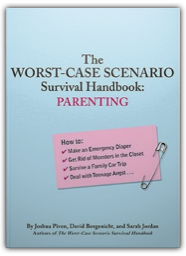
Forget quicksand and shark attacks, child-rearing is the truly terrifying activity. A screaming baby on an airplane, no diapers (!), monsters hiding in the closet, a long family car trip, the first date - these are the high-risk adventures you need to survive. Fortunately, the authors of the phenomenally best-selling Worst-Case Scenario Survival Handbook series now keep parents safe, from cradle to teens. Hands-on, step-by-step instructions show you how to remove objects stuck in a child's nose or gum stuck in hair, and how to survive endless soccer games, slumber parties, and sleep deprivation. From baby-proofing the house to dealing with a dead pet, from the perils of the play-date to explaining about the birds and the bees, this essential guide tells parents what to really expect when your worst-case scenario is all in the family. 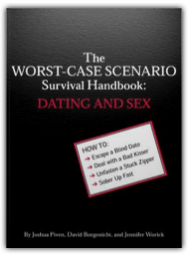
The authors of the best-selling The Worst-Case Scenario Survival Handbook are back—and they've brought a date. Whatever your own dating nightmares are, take it from the professionals, things can get worse. Just in time for Valentine's Day, here are dozens of scenarios covering every phase of the romantic—or not so romantic—turn of events. Learn how to remove stubborn articles of clothing, slip away from a blind date, and get rid of unsightly stains. Discover the secrets of dealing with a bad kisser and of surviving a meeting with your date's parents. Hands-on, step-by-step illustrated instructions help guide you through these and many more perils d'amor. Tasteful and useful, and with an appendix of great pickup lines, breakup lines, and all-purpose excuses, this is the book you need when you wake up next to someone whose name you can't remember. |

Yes, Virginia, you can butter your carrots. A farmer’s daughter tells the truth about cream, eggs, fish, chicken, chocolate—even lard. 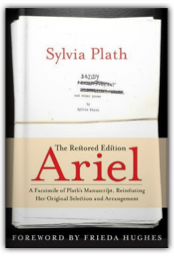
Sylvia Plath churned out her final poems at the remarkable rate of two or three a day, and Robert Lowell describes them as written by "hardly a person at all ... but one of those super-real, hypnotic, great classical heroines." Even more remarkable, she wrote them during one of the coldest, snowiest winters (1962-63) Londoners have ever known. Snowbound, without central heating, she and her two children spent much of their time sniffling, coughing, or running temperatures (In "Fever 103°" she writes, "I have been flickering, off, on, off on. / The sheets grow heavy as a lecher's kiss."). Pipes froze, lights failed, and candles were unobtainable. 
Plath was an excellent poet but is known to many for this largely autobiographical novel. The Bell Jar tells the story of a gifted young woman's mental breakdown beginning during a summer internship as a junior editor at a magazine in New York City in the early 1950s. The real Plath committed suicide in 1963 and left behind this scathingly sad, honest and perfectly-written book, which remains one of the best-told tales of a woman's descent into insanity. 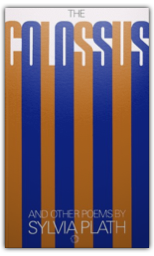
With this startling, exhilarating book of poems, which was first published in 1960, Sylvia Plath burst into literature with spectacular force. In such classics as "The Beekeeper's Daughter," "The Disquieting Muses," "I Want, I Want," and "Full Fathom Five," she writes about sows and skeletons, fathers and suicides, about the noisy imperatives of life and the chilly hunger for death. Graceful in their craftsmanship, wonderfully original in their imagery, and presenting layer after layer of meaning, the forty poems in The Colossus are early artifacts of genius that still possess the power to move, delight, and shock. 
"What I fear most, I think, is the death of the imagination.... If I sit still and don't do anything, the world goes on beating like a slack drum, without meaning. We must be moving, working, making dreams to run toward; the poverty of life without dreams is too horrible to imagine."— Sylvia Plath, from Notebooks, February 1956 |

My Library
Collection Total:
1390 Items
1390 Items
Last Updated:
Mar 22, 2009
Mar 22, 2009


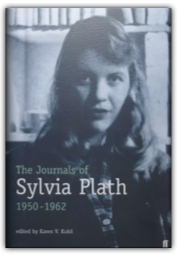
 Made with Delicious Library
Made with Delicious Library